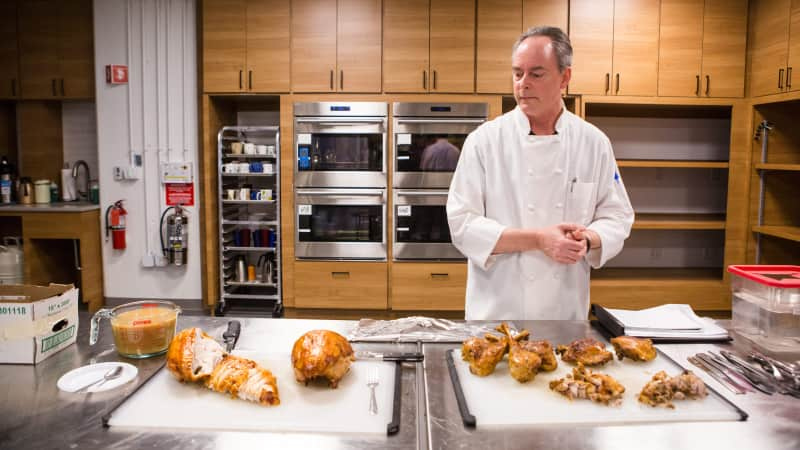My Goals and Discoveries
Relieve stress
Braising the leg quarters and then using the braising liquid to make gravy in advance means less work—and stress—on the big day.
Save time
All that's left to do on Thanksgiving is roast the breasts and reheat the leg quarters and gravy.
Maintain tradition
Crisping the skin on the breasts and the braised leq quarters in a 500-degree oven just before serving means your guests will never know that you cooked the parts separately.






